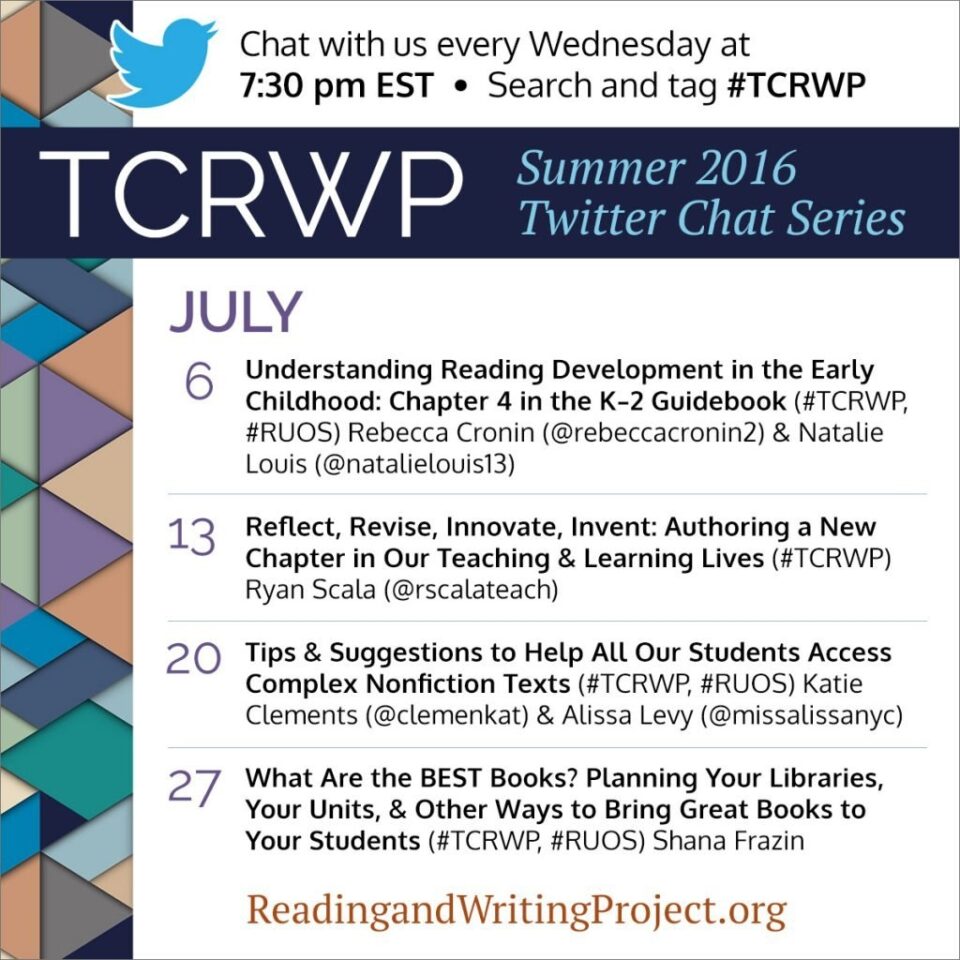
by Anna Gratz Cockerille
Helping our students get better at tackling complex nonfiction requires a great deal of know-how. It requires know-how of complex texts themselves. For example, complex texts often have:
- Multiple main ideas
- Implicit main ideas
- Abstract concepts
- Long, winding sections that don’t contribute necessarily to a specific main idea
- Parts that are more open to the reader’s interpretation
- Parts without a clear structure or with a different kind of structure, such a narrative
- Questions that aren’t answered immediately
- Changes in tone and mood
Teaching complex nonfiction well also requires know-how of the subtle, intricate set of skills that students must master. Fortunately, we have resources for this. If you haven’t checked out Reading Pathways as part of your Units of Study for Teaching Reading, you must. Not only is it a clear, step-by-step, flexible assessment system, it also provides a wealth of background knowledge for teachers and students alike on specific reading skills. Working with Reading Pathways is like taking a course in reading instruction. Even the experts who created Reading Pathways say they learned so much during its writing. The book was revised perhaps more times than any other in the series, and the revision process included hours of research, conversations, and studying of student work by many thoughtful, reflective educators. In the end, those who worked on the text say that have a much deeper understanding of how to help kids get better at reading.
In fact, if you want to learn more about a reading skill, you might create your own mini-skill progression. Doing this may help you to unpack what, and readers do to get better at the skill and may lead to a deeper understanding of the progressions in Reading Pathways. Choose a specific skill, such as “determining main ideas in complex nonfiction,” and read a bit, watching to see how you tackle the skill. Then, list what a reader might do at varying levels of proficiency with the skill. For example, you might notice that readers who are less proficient at determining main ideas in complex nonfiction rely on marked sections to know when to pause to reflect on main ideas, such as when a new bolded heading appears. But more proficient readers pause more often and use more subtle changes in the text’s structure to clue them in on when to pause and reflect.
Another invaluable resource for getting better at teaching complex nonfiction is, as always, the TCRWP community and experts such as Katie Clements and Alissa Levy, who will lead tomorrow night’s Twitter chat. Katie is author of the book Tackling Complexity: Moving Up Levels of Nonfiction, part of the 5th Grade Units of Study for Teaching Reading series. Both Katie and Alissa are staff developers for The Reading and Writing Project.


